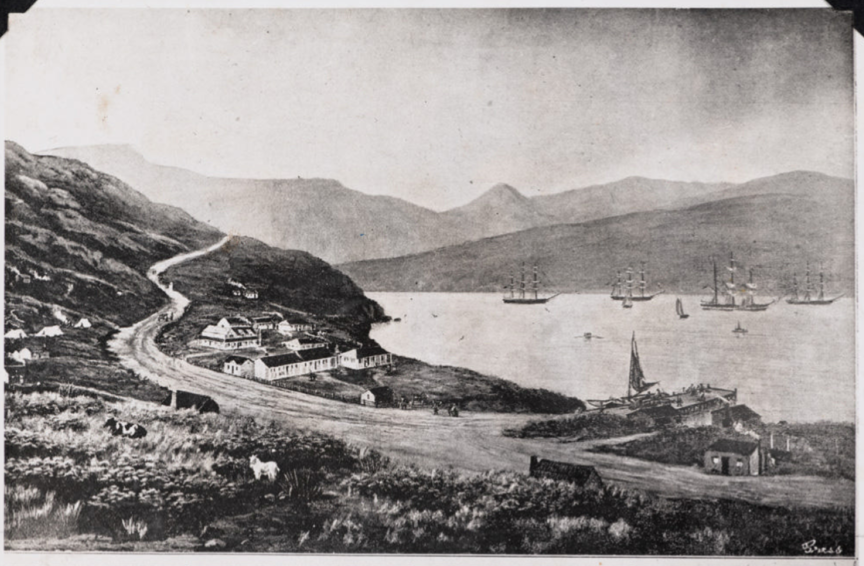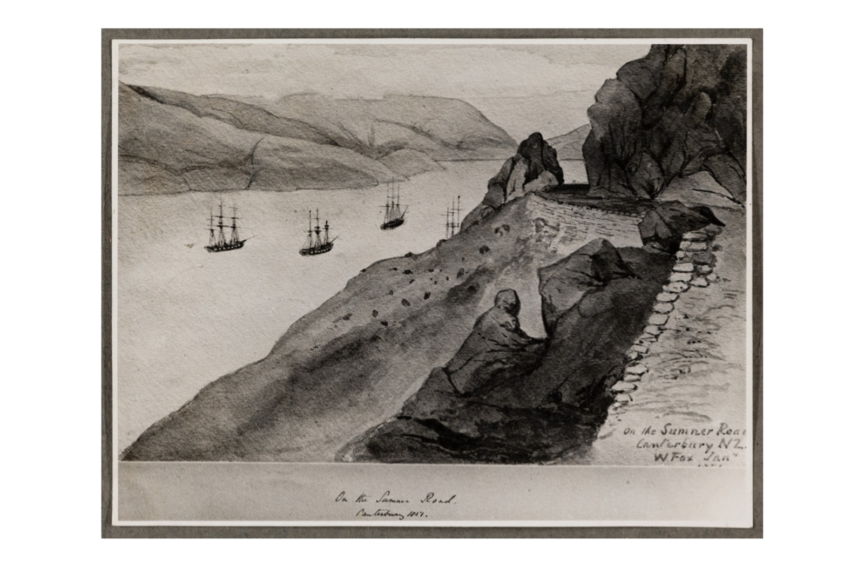PO Box 95
Lyttelton 8841
Te Ūaka recognises Te Hapū o Ngāti Wheke as Mana Whenua and Mana Moana for Te Whakaraupō / Lyttelton Harbour.
The Port of Lyttelton's Historic Jetties
On 20 June, 2023 the Lyttelton Port Company announced their decision to dismantle three of the inner harbour's historic wharves; jetties 4, 5 and 6. These late nineteenth century structures which have been witness to so much maritime activity over more than a century, have not been accessible to the public since the mid 1990s. The Port Company states that 66 kms of timber will be removed, including the piles which will be extracted by a crane on a barge; currently visible in place beside Number 6 jetty. When possible the timber will be recycled by being gifted to iwi, local councils and community groups, with necessary environmental controls in place in regard to the infestation of Mediterranean fanworm, which was found in the piles in 2022.
Prior to European settlement, the waterfront was utilised by Whakaraupō Māori as a base for fishing and trading at Ōhinehou, near the entrance to today's road tunnel, and also near the site of the old Post Office. The bay which would become the Port of Lyttelton, had shallow water to a depth of only about 8 metres at low tide and a gently sloping sandy shore on its eastern flanks, with rocky bluffs to the west. The seabed was loess; a fine wind-deposited silt, which made for huge challenges when colonial infrastructure began to be constructed, as it turned to a cloying mud when worked.
Once Lyttelton had been officially designated a port on 30 August 1849, preparations for the arrival of the Canterbury Association’s fleet of 'Pilgrim' ships bound for the carefully planned settlement of the region, began in earnest. Under the watchful eye of Captain Joseph Thomas, the Canterbury Association's Chief Surveyor, loads of Tasmanian hardwood were imported and the first jetty was constructed by Messrs John Grubb, and Robert and Magnus Allan. Whilst the jetty was being built, others worked on levelling the foreshore, the construction of a seawall, the roadway named Norwich Quay (after the Anglican Bishopric of Norwich) along with a customs house, agent's office, immigration barracks and a fine house for Robert Godley, the Canterbury Association Agent and leader.
That first jetty, known as Thomas's or ‘the Government Jetty,’ was soon extended with the addition of screw piles; the installation of which highlighted the peculiarities of the seabed in as much as the liquified silt 'swallowed' most of the rock that was thrown at it! Port development continued apace through the rest of the century. The construction of 'Peacock's Wharf' in 1857 was a privately funded enterprise by John Jenkins Peacock; this was the first commercial jetty near the location of today's No 7 Jetty (also known as the 'Ocean Steamer wharf' through the 20th century). The massive engineering achievement of the construction of the rail tunnel through the hill to Heathcote, provided much spoil for the reclamation nowadays occupied by oil tanks. A damaging tsunami caused by an earthquake in Peru in 1868 convinced the powers that be of the need for breakwaters to protect the inner harbour; the eastern mole, completed in 1876 with railway lines, goods shed and lighthouse, became known as Gladstone Pier.
With the establishment of the Lyttelton Harbour Board in 1877, facilities continued to be built and improved, including jetties 4, 5 and 6, constructed between 1875-1881. Another essential element of port infrastructure, the graving dock, was opened in 1883, to much fanfare. Over ensuing years the inner harbour jetties saw the arrival and departure of countless vessels powered by both sail and steam. The Museum's online collection holds numerous images of a forest of masts and funnels at these jetties; vessels servicing the frozen meat and wool trade, royal visitors, troop and hospital ships, Antarctic exploration vessels, naval craft including those that served Operation Deep Freeze in the 1950s and 60s, tugs, ferries, steamers and pleasure boats. Neighbouring Number 2 Jetty hosted the movements of the inter island ferry service for eighty years until the ceasing of operations in 1976.
The development of Cashin Quay from 1957-1964 and the opening of the Container Terminal in 1976 saw cargo movement shift away from the inner harbour jetties. Jetties 4, 5 and 6 had their decking replaced in 1978, however from the early 1990s they had fallen into such a state of disrepair that they were deemed unsafe and public access was no longer permitted. Locals of a certain generation tell stories of their exploits on and around those jetties, including the Museum's own founder, Baden Norris, who wrote of searching for 'treasure' around the jetty piles as a boy. To date, Lyttelton Port Company has not announced any plans for operational activities in the vicinity once the 'broken teeth' in the inner harbour's smile have been removed.

